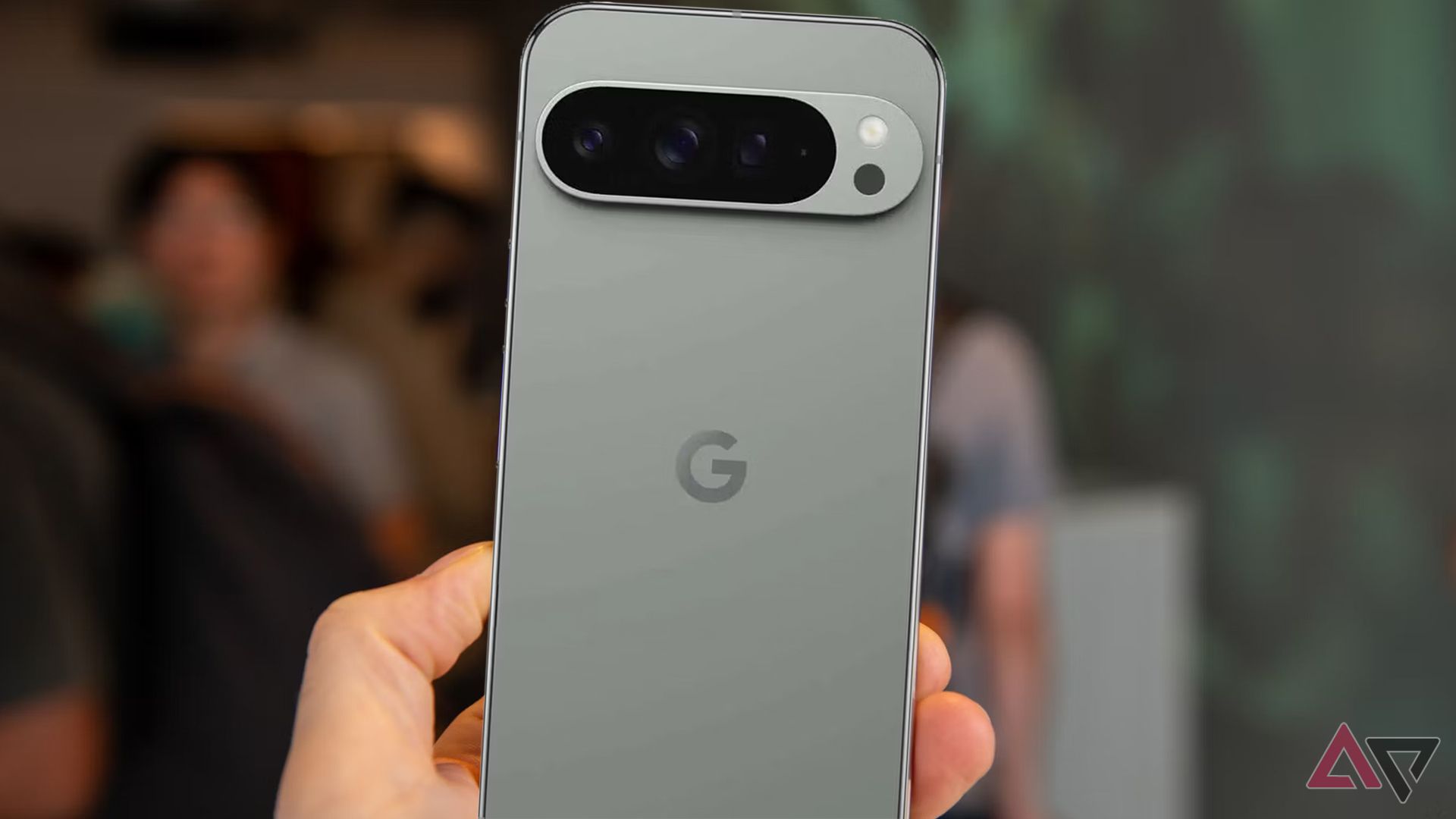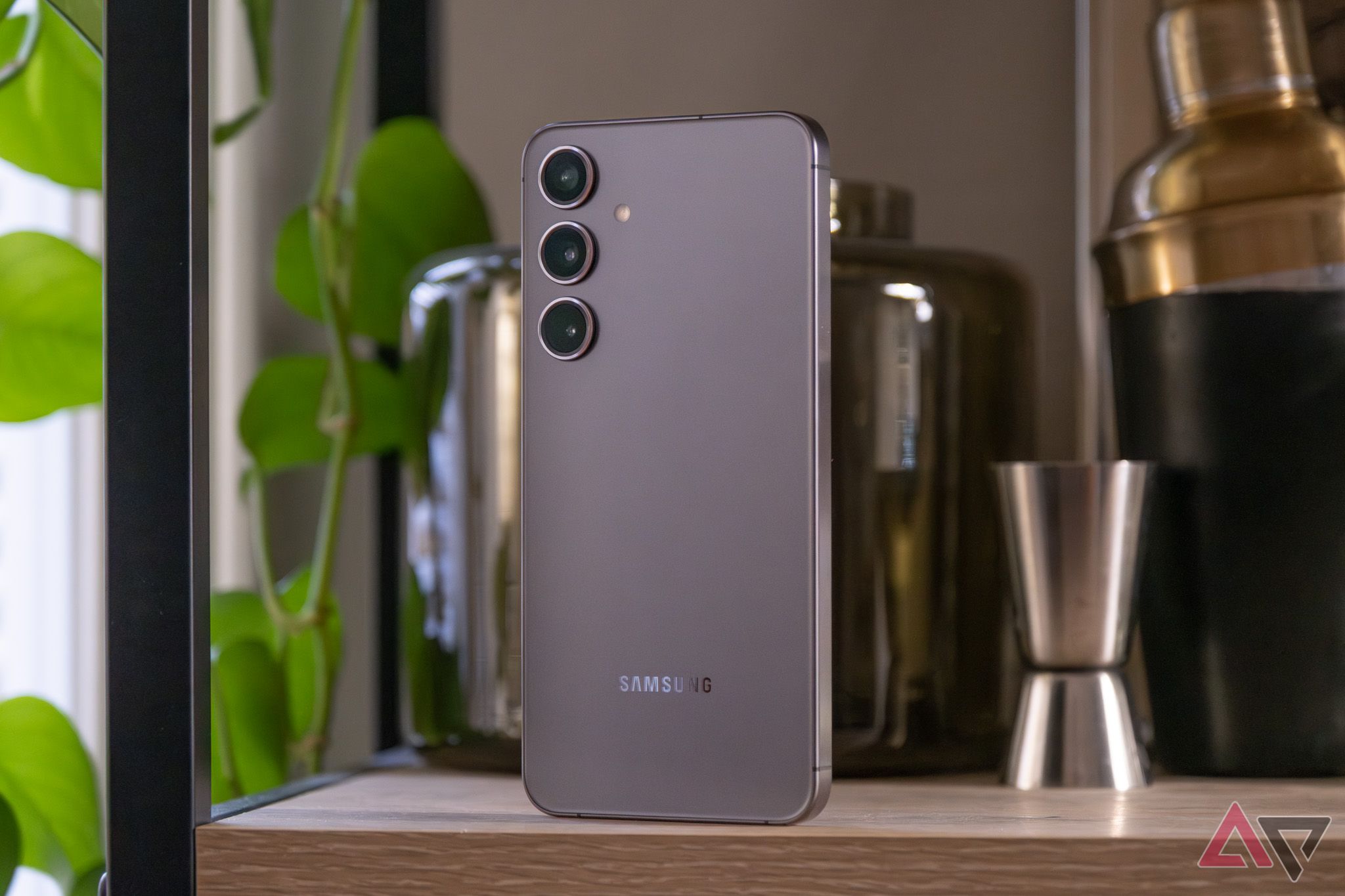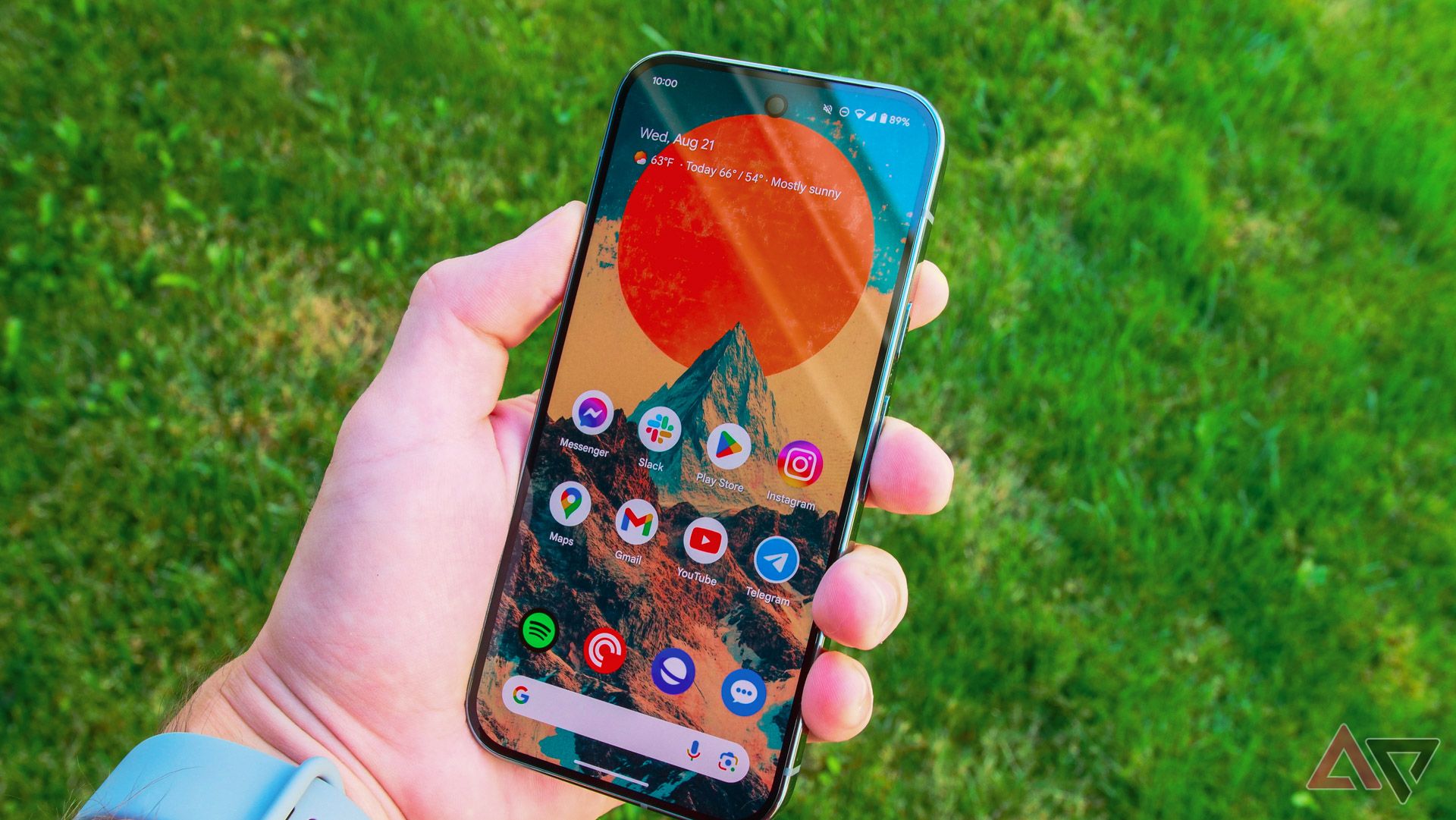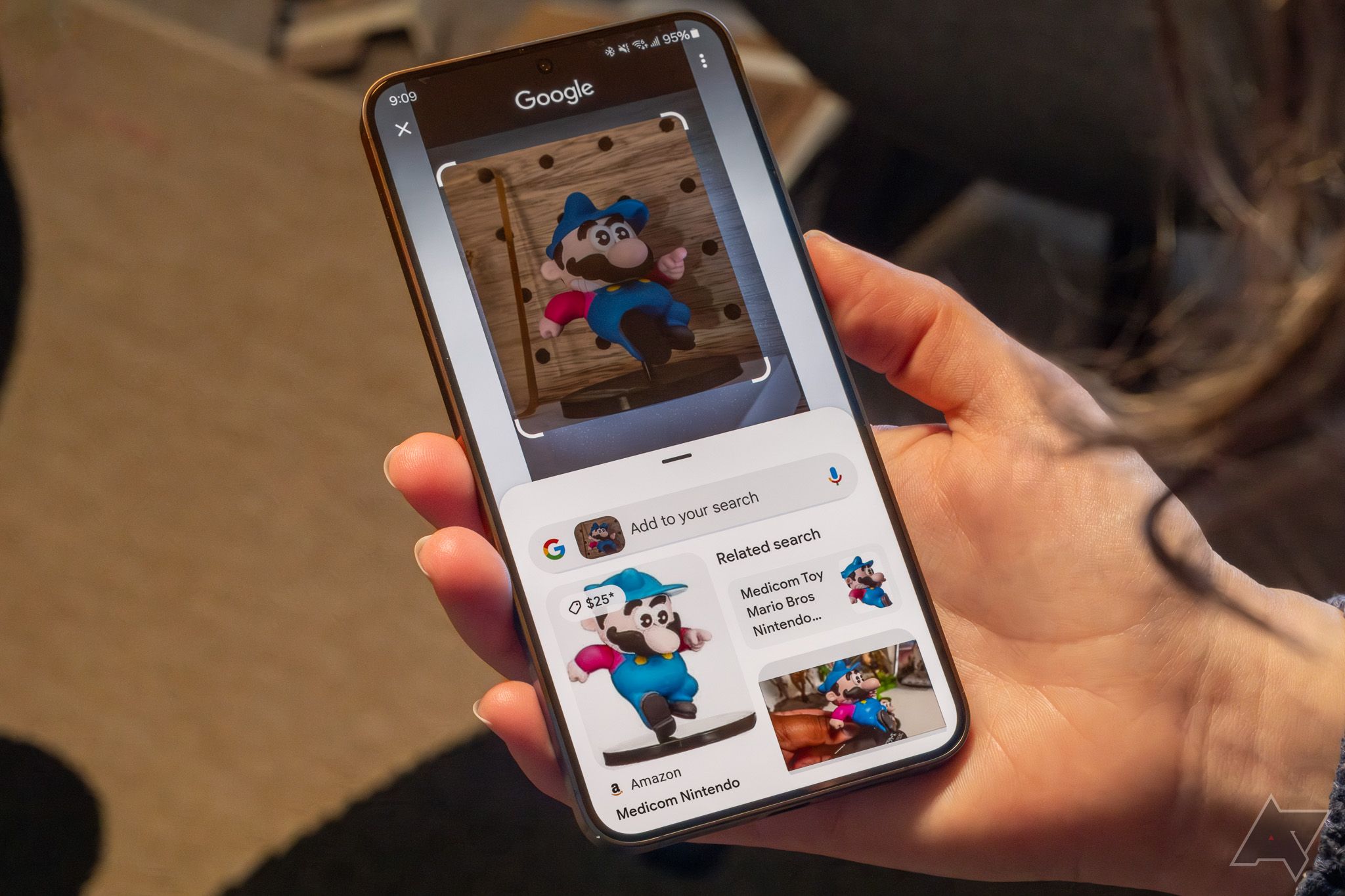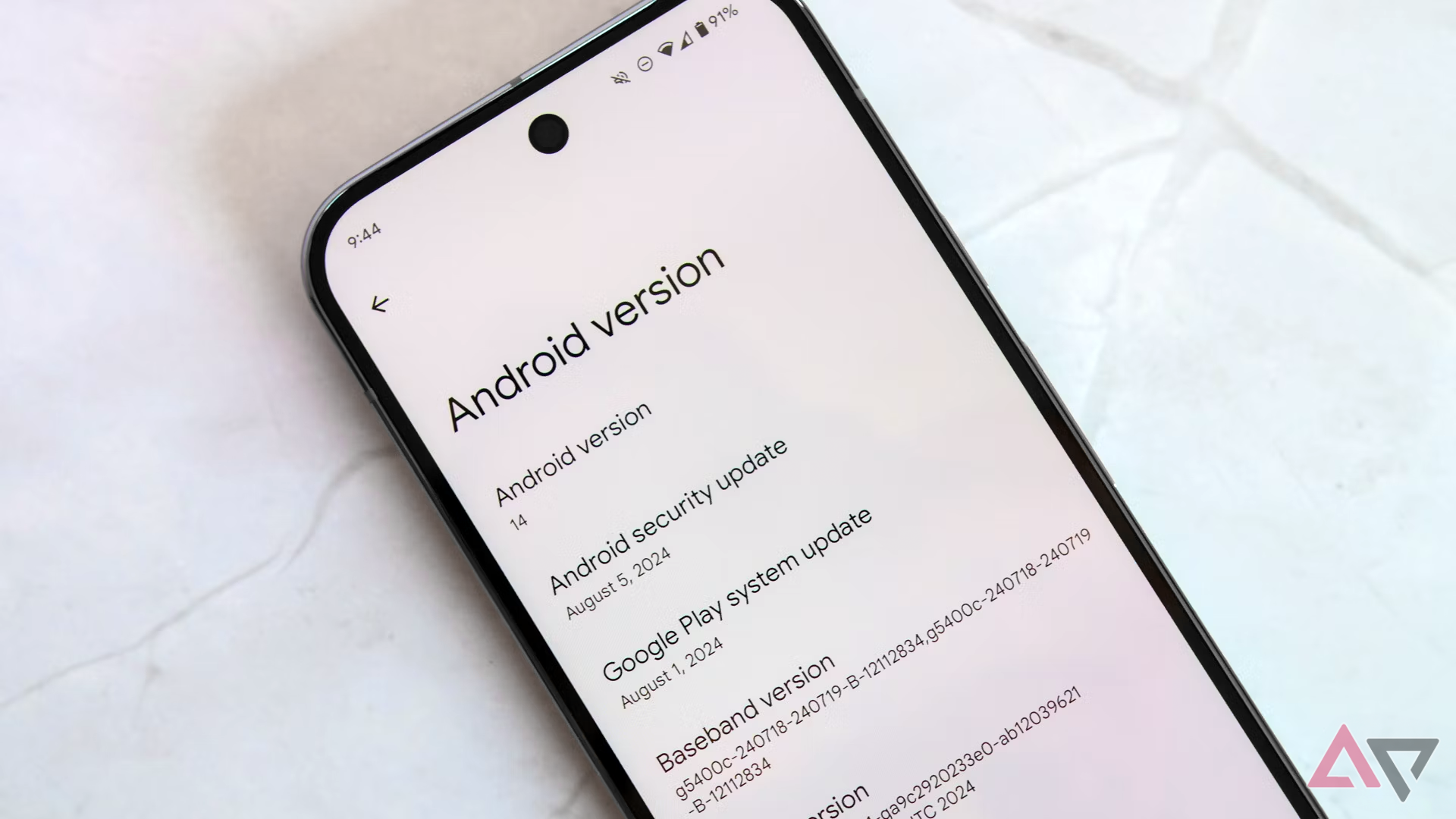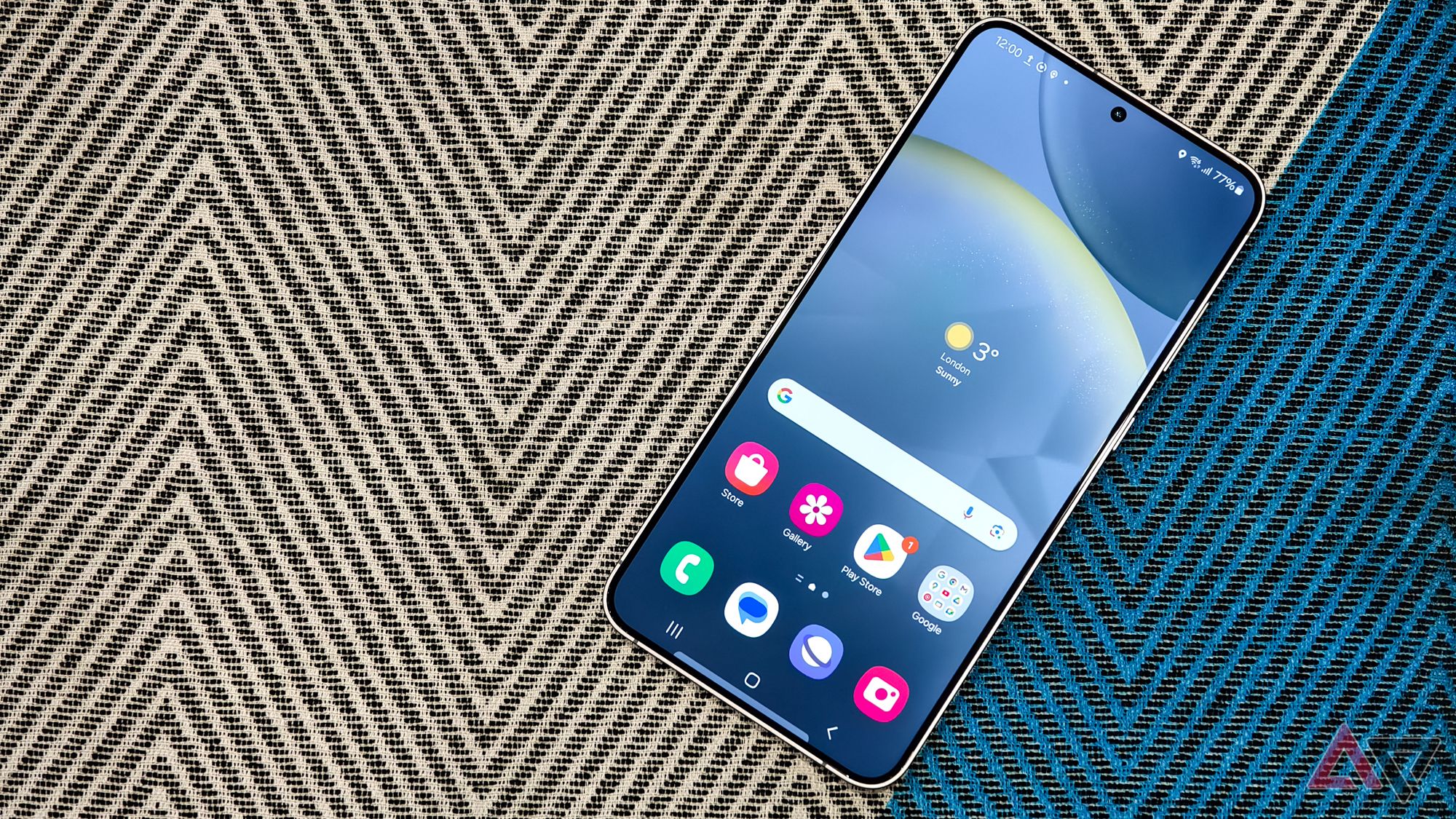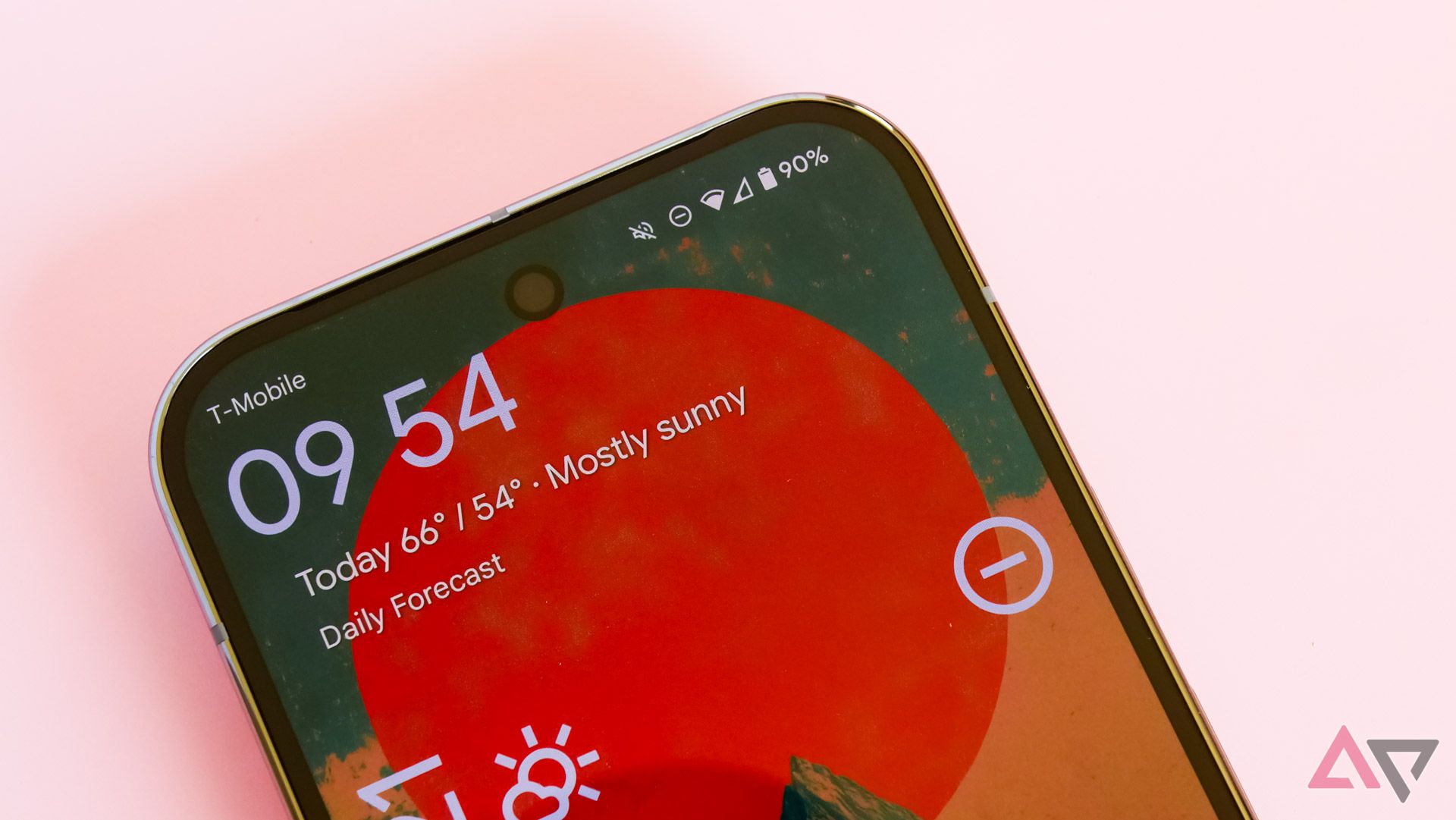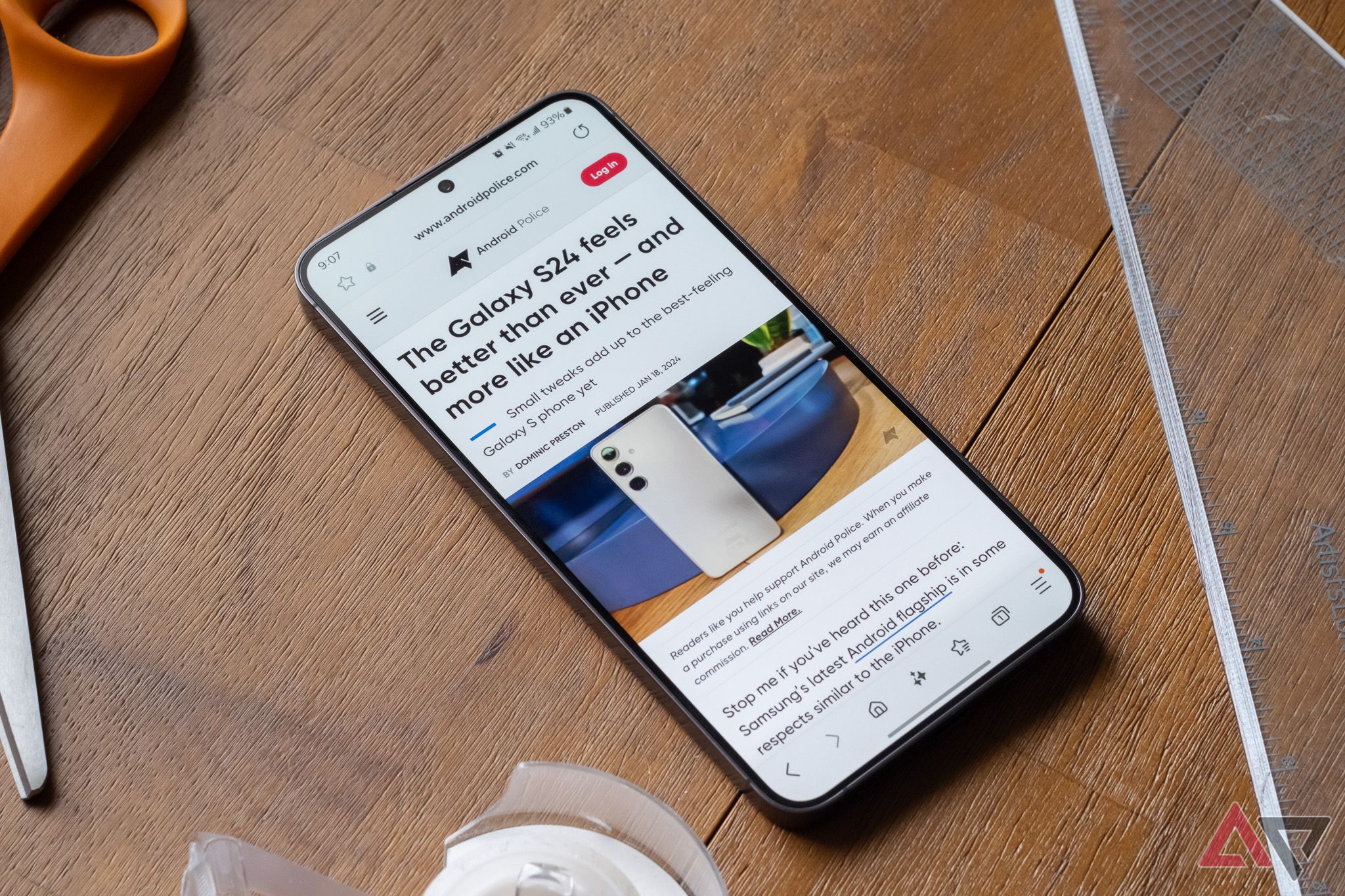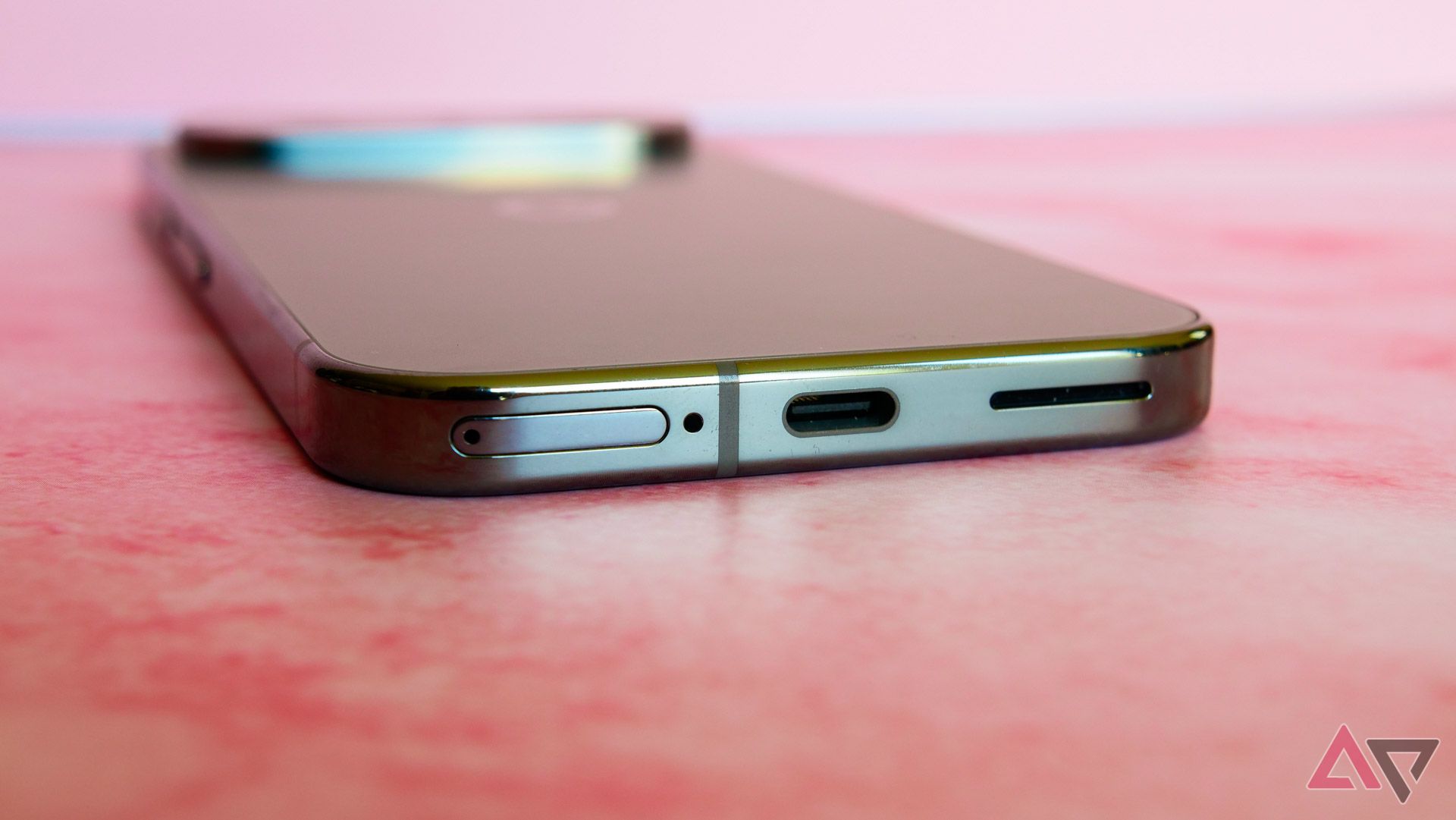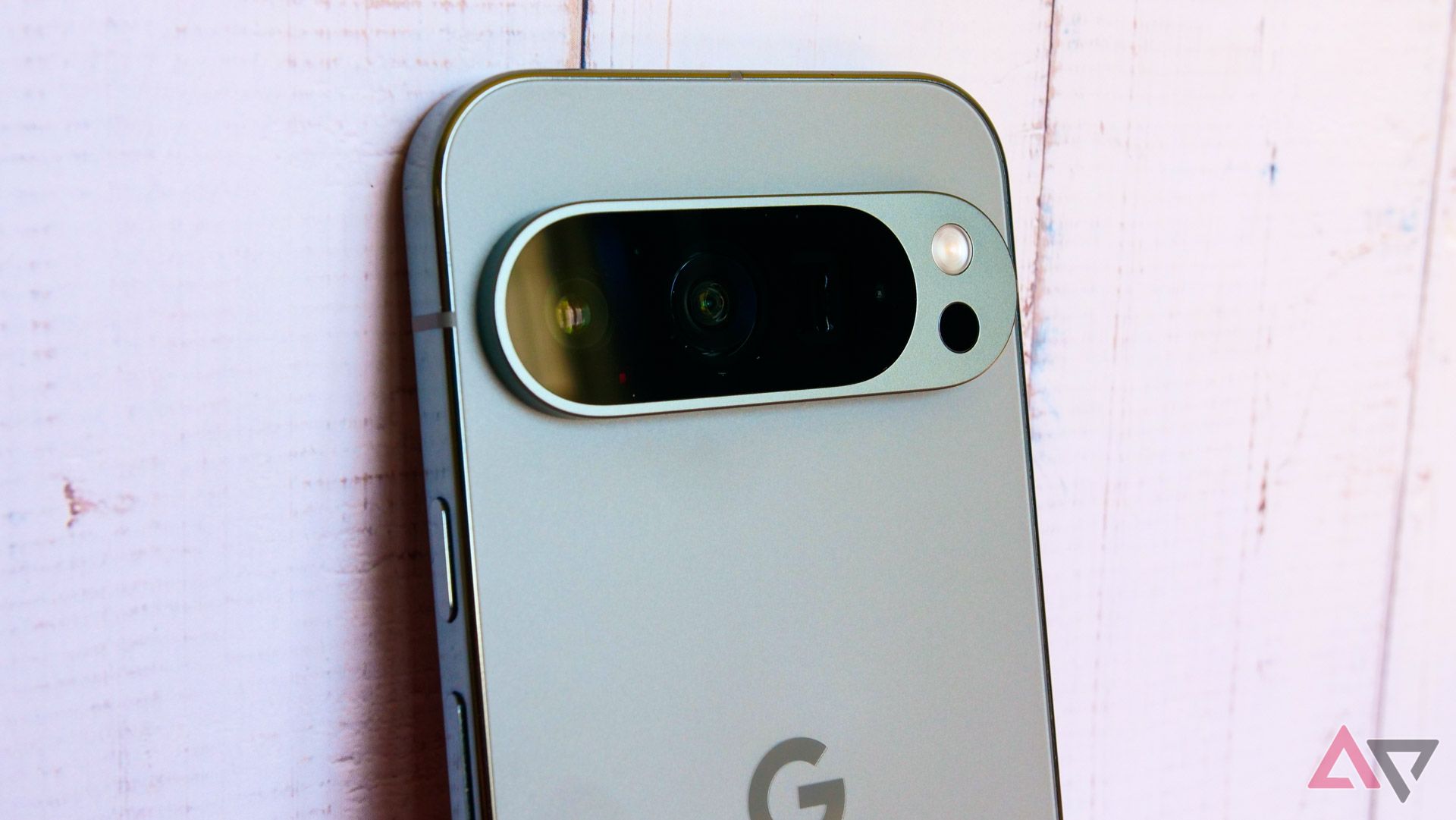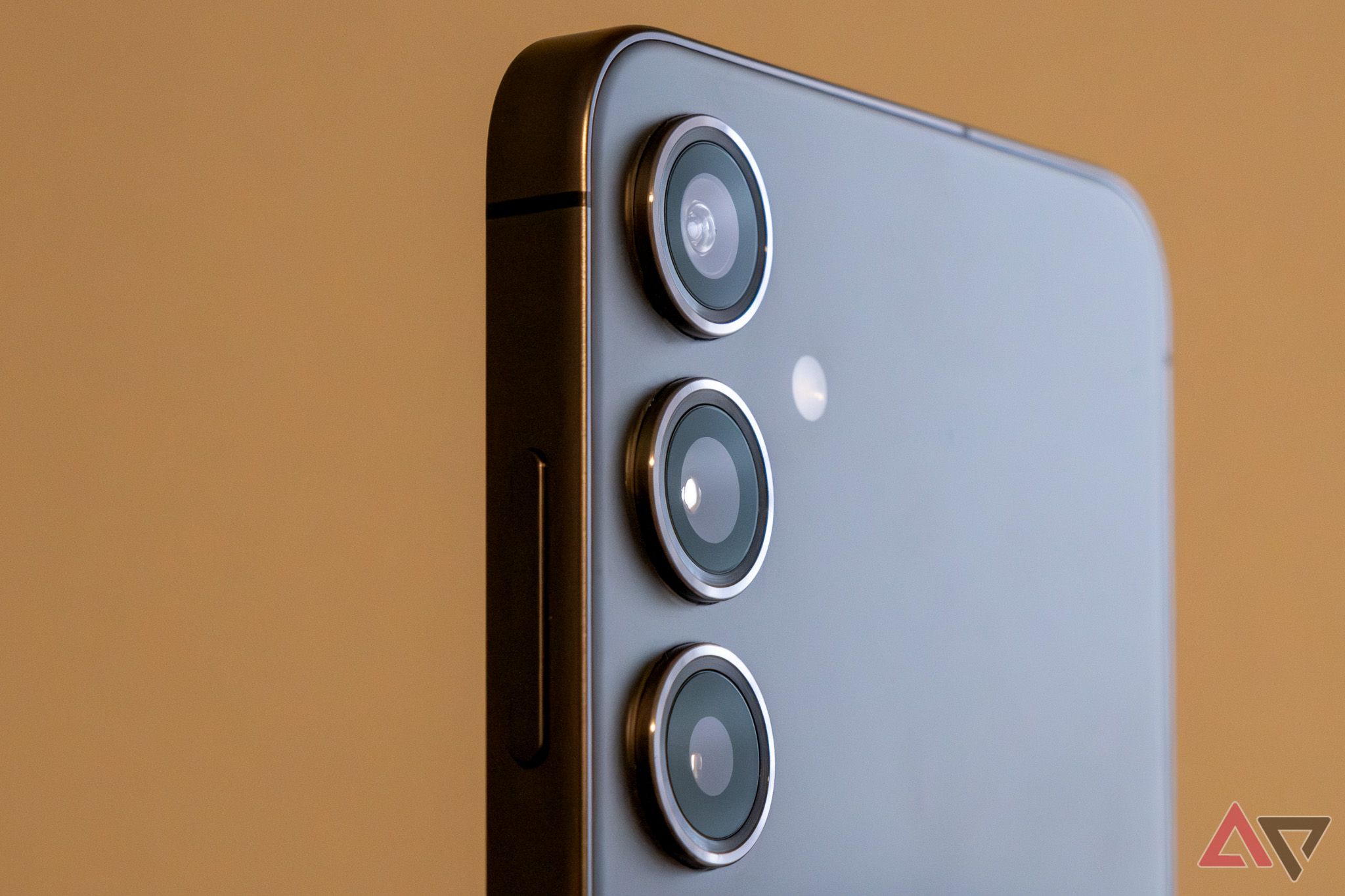-
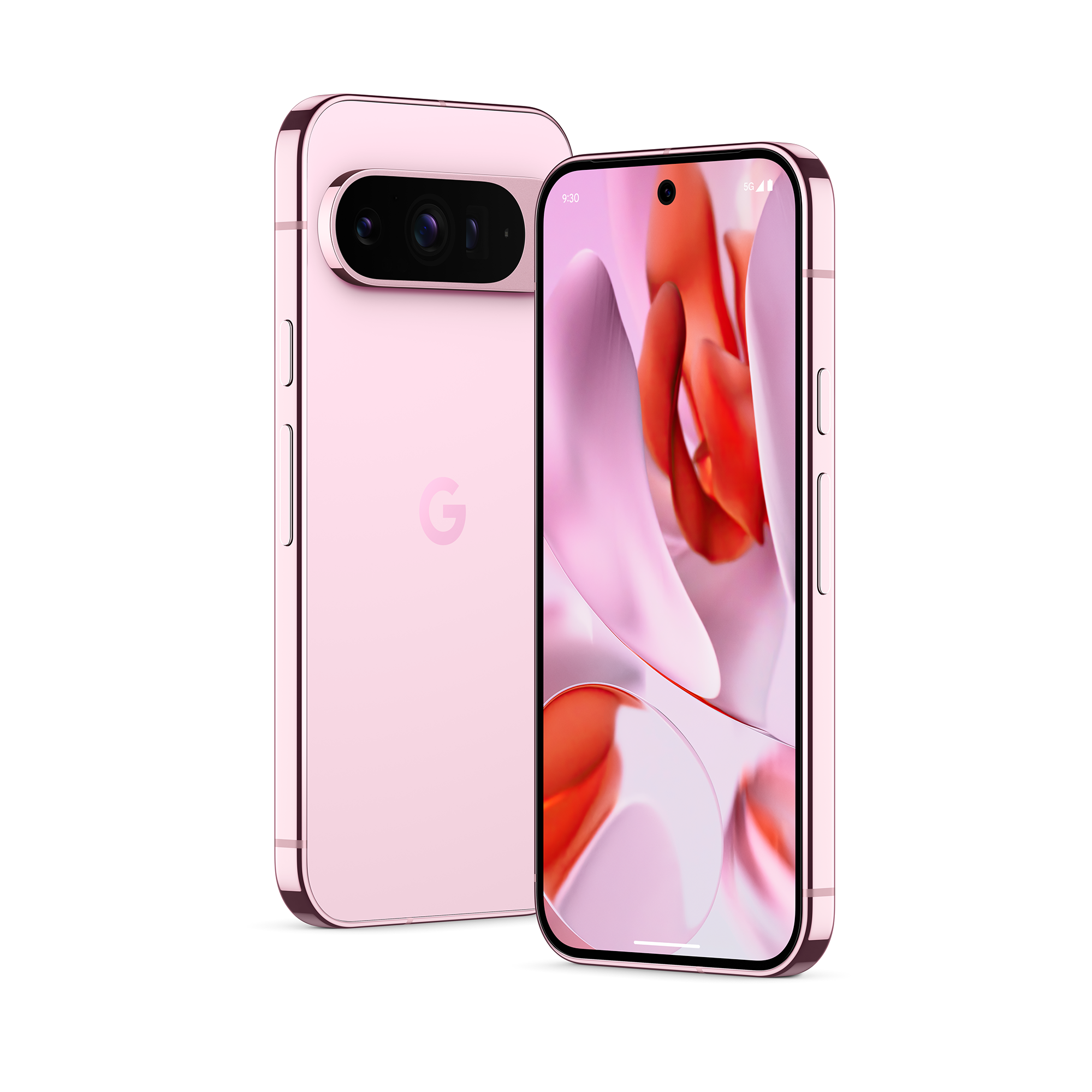
The Goldilocks flagship
Google Pixel 9 Pro
Everything about the Pixel 9 Pro feels refined, just as a $1,000 phone should. Its standout features include an exceptional camera system, an all-new eye-catching design, and a compact form factor that’s comfortable to hold. Google’s refined software experience (coupled with thoughtful AI integrations) further enhances its appeal.
Pros- Visually appealing redesign
- Compact form factor
- Pixel camera experience
Cons- Tensor G4 isn’t meant for heavy gaming
- Slower charging speeds
-
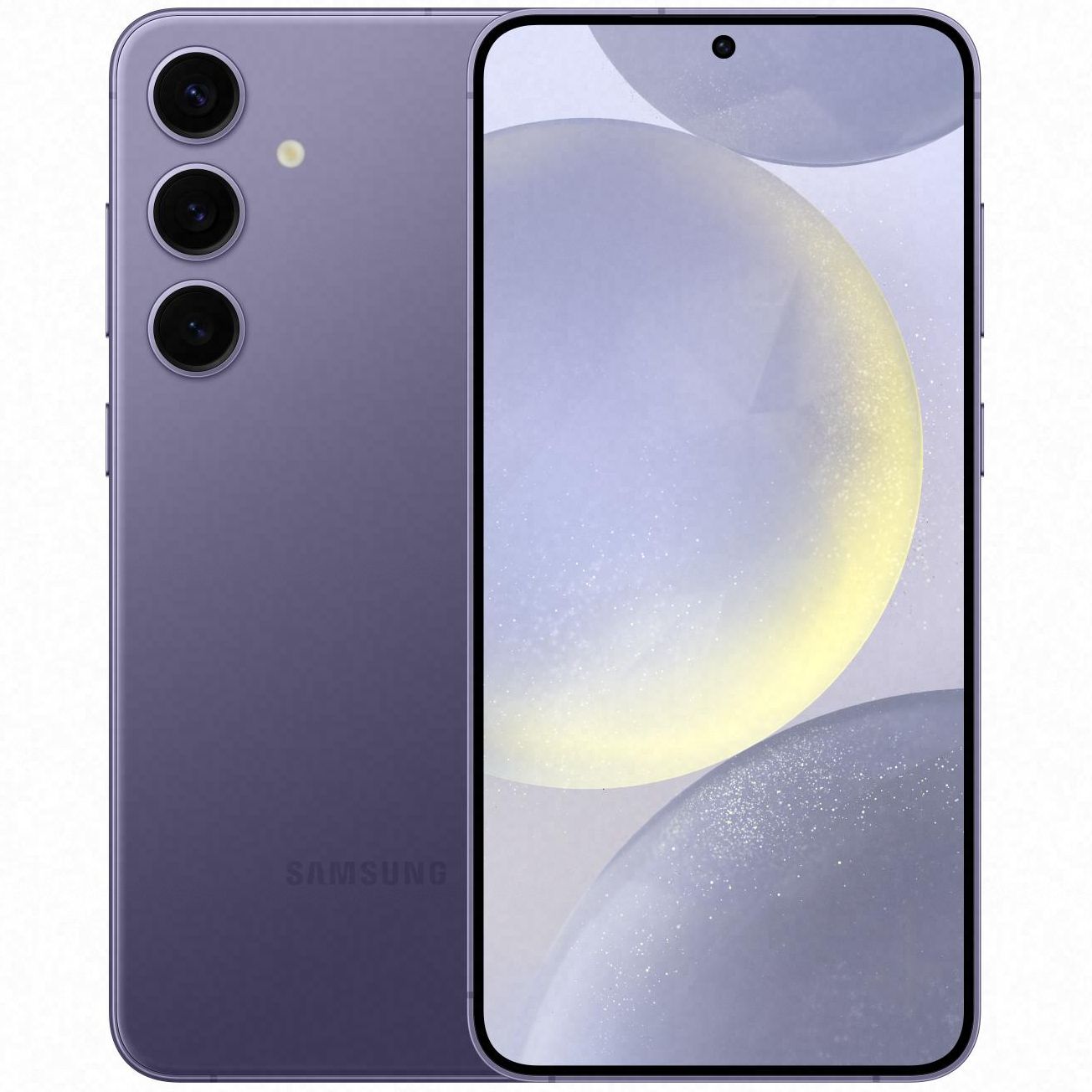
Performance workhorse
Samsung Galaxy S24+
$799 $1000 Save $201
The Galaxy S24+ excels as a well-rounded flagship that caters to a broad audience. Its blazing-fast performance, long-lasting battery, stunning display, and extended software support make it a compelling choice. While its camera performance might not always match the Pixels in challenging situations, it remains a competent shooter for everyday use.
Pros- Bigger display
- True flagship performance
- Faster charging, bigger battery
Cons- Cameras still need improvement
- Looks like every other Samsung phone
The Pixel 9 Pro brings the full suite of “Pro” Pixel features to a more compact and manageable form factor. For the first time, Google offers three distinct options in the Pixel 9 series, positioning the Pixel 9 Pro as the middle sibling — a role it shares with Samsung’s Galaxy S24+ . Both devices are priced similarly and share numerous features, making them tough contenders in the top flagship smartphone segment.
However, they also have their unique strengths and differences, which could make one of these a better pick. Whether you’re torn between these two models or considering switching brands, this guide will walk you through everything you need to know to make an informed choice.
Price, availability, and specs
Google unveiled the Pixel 9 series in August 2024, with the Pixel 9 and Pixel 9 Pro XL becoming available first. The Pixel 9 Pro, however, has a slightly delayed release, hitting the shelves in September. Despite its “Pro” moniker, the Pixel 9 Pro starts with a surprisingly modest 128GB of storage for $999. Upgrading to 256GB will cost you $1,099, while 512GB and 1TB options are priced at $1,219 and $1,499, respectively. All models come with a generous 16GB of RAM.
The Pixel 9 Pro offers a palette of Obsidian, Porcelain, Hazel, and the new Rose Quartz. However, color availability might vary depending on the storage configuration you choose. In the US, the Pixel 9 Pro can be purchased through all major carriers, while the unlocked versions are available through the Google Store, Best Buy, and Amazon.
The Galaxy S24+ is readily available through Samsung and Best Buy, with a starting price of $1,000. The base configuration offers 12GB of RAM and 256GB of storage. For those needing more space, a 512GB variant is available for an additional $120. The Galaxy S24+ comes in many colors, including Cobalt Violet, Onyx Black, Sapphire Blue, Jade Green, and Sandstone Orange. However, some colors might be exclusive to Samsung.com.
-
Google Pixel 9 Pro Samsung Galaxy S24+ SoC Google Tensor G4 Qualcomm Snapdragon 8 Gen 3 for Galaxy Display type LTPO OLED, 1-120Hz AMOLED, 1-120Hz Display dimensions 6.3″ 6.7″ Display resolution 1280 x 2856 3120 × 1440 RAM 16GB 12GB Storage 128GB, 256GB, 512GB, or 1TB 256GB or 512GB Battery 4,700mAh 4,900mAh Charge speed 27W wired, 21W wireless 45W wired, 15W wireless Charge options USB-C wired, Qi wireless USB-C wired, Qi wireless Ports USB-C USB-C SIM support Nano-SIM and eSIM Nano-SIM and eSIM Operating System Android 14 Android 14 and One UI 6.1 Front camera 42MP, f/2.2 12MP, f/2.2 Rear camera 50MP, f/1.7, OIS main; 48MP, f/1.7 ultrawide; 48MP, f/2.8, 5x telephoto 50MP, f/1.8 OIS main; 12MP, f/2.2 ultrawide; 10MP, f/2.4 telephoto (3× zoom) Wi-Fi connectivity Wi-Fi 7 Wi-Fi 6e, Wi-Fi Direct Bluetooth Bluetooth 5.3 Bluetooth 5.3 Dimensions 152.8 x 72 x 8.5mm 158.5 × 76.2 × 7.6mm Weight 199g 197g IP Rating IP68 IP68 Colors Obsidian, Porcelain, Hazel, Rose Quartz Onyx Black, Marble Gray, Cobalt Violet, Amber Yellow, Jade Green, Sapphire Blue, and Sandstone Orange Price From $999 $1,000
Design
Does size matter?
In recent years, the flat-edged design has become a signature look for smartphones, largely popularized by the iPhone. Google’s Pixel 9 Pro takes this trend to the next level, with a design that closely mimics the aesthetic of the latest iPhones. Love it or hate it, there’s no denying that the Pixel 9 series undoubtedly brings us the most polished and well-built Pixel phones yet. The frosted glass back, redesigned camera bar, flat, shiny aluminum rails, and overall robust build make it scream “premium.” That said, those shiny side rails can still get smudged, and a matte finish could’ve helped keep those pesky fingerprints at bay.
On the flip side, the Samsung Galaxy S24+ keeps things more familiar, sticking closely to its predecessor’s design language. The Galaxy S24+ is the epitome of “if it ain’t broke, don’t fix it,” with its clean, minimalist look. You get the essentials: a flat display with a hole-punch selfie camera, razor-thin bezels, and a featureless back punctuated only by three camera rings. It might not turn heads at a party, but it’s still one of the most solidly built Android phones out there.
When it comes to size, the Pixel 9 Pro is a bit more pocket-friendly, measuring 152.8 x 72 x 8.5mm. It’s shorter and narrower, making it easier to handle if you’re not into big phones. The Galaxy S24+, on the other hand, is taller and wider, offering more screen space for those who like to go big. Despite the size difference, both phones tip the scales at around 200 grams, but the Pixel 9 Pro is a smidge thicker.
Durability-wise, the Pixel 9 Pro and Galaxy S24+ come ready for life’s little mishaps, sporting IP68 ratings and Gorilla Glass Victus 2 on the front and back. Samsung goes a step further with its “Armor Aluminum” frame, claiming enhanced drop and scratch resistance. Google makes no such claims about the Pixel 9 Pro’s aluminum frame.
In the end, the devices offer top-notch build quality. The Pixel 9 Pro’s compact size might win over those who prefer a phone that’s easy to handle, while the Galaxy S24+ offers a larger canvas for content.
Display
Flagship stuff
The Pixel 9 Pro features a 6.3-inch Super Actua OLED display with a resolution of 1280 x 2856 pixels, falling halfway between Full HD and Quad HD. It incorporates LTPO technology, enabling a variable refresh rate from 1Hz to 120Hz, adapting on the fly to what you’re doing on-screen. The display boasts a pixel density of 495 PPI, a 2000 nit typical brightness, and a peak brightness of 3000 nits for those moments when you’re out in the sun.
On the other hand, the Samsung Galaxy S24+ features a larger 6.7-inch Dynamic AMOLED 2x display, stepping up the resolution to 1440 × 3120 pixels. Like the Pixel 9 Pro, it also uses LTPO technology to adjust the refresh rate from 1Hz to 120Hz seamlessly. It offers a slightly higher pixel density at 513 PPI but falls short in terms of peak brightness with a peak of up to 2600 nits.
Numbers aside, both displays are exceptional, offering vivid colors, excellent viewing angles, and responsive touch performance. The main difference lies in their size: the Pixel 9 Pro’s 6.3-inch screen is more compact, making it a bit easier to manage with one hand, while the Galaxy S24+’s 6.7-inch display leans more toward phablet territory, providing extra screen real estate for videos, games, and multitasking.
In terms of audio, the phones are well-equipped with stereo speakers — one positioned at the bottom and the other doubling as an earpiece. Additionally, the Pixel 9 Pro and the Galaxy S24+ feature fast and reliable ultrasonic fingerprint scanners, ensuring quick and secure phone access.
Software
They see each other AI to AI
When it comes to software, the Pixel 9 Pro and Galaxy S24+ deliver the top two most refined and polished Android experiences available. Deciding which one takes the top spot really comes down to preference. Both phones run Android 14 out of the box, so the playing field is level in that regard. Although many anticipated that the Pixel 9 Pro might launch with Android 15 and gain a slight edge, that didn’t happen.
What’s noteworthy, though, is that Google and Samsung are committing to seven years of OS and security updates, which means you’re more likely to get bored with either of these phones before it runs out of software support.
The Pixel 9 Pro uses Google’s Pixel Launcher, a clean, straightforward interface that’s as close to stock Android as you can get. It’s minimalist, fast, and designed to keep things simple. If you prefer an uncluttered experience with quick access to Google’s services, the Pixel 9 Pro will feel like home.
On the other hand, Samsung’s Galaxy S24+ runs on One UI, which is more customized and feature-packed. One UI offers a wealth of additional settings and options, catering to users who love to tweak and personalize their devices. It’s designed with one-handed use in mind, with many interface elements placed lower on the screen for easier access. Samsung also includes a host of proprietary apps and features, some of which overlap with Google’s offerings. However, others are unique to Samsung, like Samsung DeX and Samsung Health.
Both phones heavily leverage AI to enhance various aspects of the user experience. Features like Circle to Search, Live Translate, AI photo editing, and Gemini Live are available on both devices, offering powerful tools for productivity, communication, and creativity. The Pixel 9 Pro has the advantage of running many AI tasks, like Gemini features, directly on the device, which can make them faster and more private. You can also count on the Pixel to be the first in line for any new Google AI features, ensuring it stays at the cutting edge of what’s possible with Android.
Performance and battery life
Power struggle
The Pixel 9 Pro is powered by Google’s in-house Tensor G4 chip, paired with a Titan M2 security co-processor, LPDDR5X RAM, and UFS 3.1 storage. As expected, the Tensor G4 offers only minor upgrades over its predecessor. However, the improvements are in areas that count — like cooling and power efficiency.
During everyday tasks, the Pixel 9 Pro remains cool and snappy, and while the phone occasionally gets warm, it’s never to the point of concern. This marks a significant improvement over previous Tensor-powered Pixels, which tended to overheat. However, demanding tasks like gaming can reveal the performance gap between the Tensor G4 and its Snapdragon counterpart.
The Galaxy S24+, powered by the Snapdragon 8 Gen 3 (for Galaxy), delivers exceptional performance across the board. From everyday tasks to intensive gaming sessions, the phone handles everything with ease. The Snapdragon chipset’s prowess is undeniable, offering a noticeable advantage over the Tensor G4 in terms of heavy gaming and sustained performance.
It’s worth noting that Samsung also offers the Galaxy S24+ with an Exynos 2400 chipset in some markets, which might exhibit a slight performance difference compared to the Snapdragon variant. Speed is another area where the Pixel 9 Pro falls short. Google opted for UFS 3.1 storage, which is slower than the UFS 4.0 found in the Galaxy S24+.
The Galaxy S24+ benefits from the efficiency of the Snapdragon 8 Gen 3, coupled with a 4,900 mAh battery, delivering impressive longevity. During testing, the S24+ consistently provided over 6 hours of screen-on time, easily lasting a full day of moderate to heavy usage and even stretching beyond that with lighter use.
The Pixel 9 Pro, with its smaller 4,700 mAh battery, doesn’t quite reach the same endurance level. The Tensor G4’s improved efficiency helps, but it still only manages around 5 hours of screen-on time. This isn’t bad, especially considering the phone’s more compact size, but it’s not as impressive as the Galaxy S24+.
Charging speeds also differ. The Pixel 9 Pro is still limited to 27W wired charging and requires 80 to 90 minutes for a full charge. The Galaxy S24+, with its 45W wired charging, achieves a full charge in just over an hour. The Pixel 9 Pro does offer faster wireless charging (up to 21W) but only with Google’s Pixel Stand. With other Qi-compatible chargers, it drops to 12W. The Galaxy S24+, on the other hand, charges at 15W wirelessly with any compatible charger.
However, neither Google nor Samsung has embraced the new Qi2 standard, which would allow for MagSafe-style magnetic charging. While this omission was understandable when the Galaxy S24+ launched, it’s a bit disappointing to see Google also skipping it with the Pixel 9 series. Google cited a lack of market demand, but given the popularity of magnetic cases and accessories, that reasoning feels a bit out of touch.
Lastly, it’s worth noting that the Pixel 9 Pro and Galaxy S24+ ship without a charger in the box, so you’ll need to factor in the additional cost of purchasing one separately.
Cameras
More of what we already know
When it comes to cameras, the Google Pixel 9 Pro and Samsung Galaxy S24+ offer solid setups, but they aren’t exactly reinventing the wheel. The Pixel 9 Pro’s 50MP primary and 48MP telephoto lenses are practically the same as those on the Pixel 8 Pro. However, the ultrawide camera has received a slight upgrade, featuring a 48MP lens with a wider f/1.7 sensor but with a tad narrower 123-degree field of view compared to last year’s 126-degree coverage.
On the other hand, the Galaxy S24+ brings a triple camera system that echoes the setup from the Galaxy S22+. It sports a 50MP primary shooter with an f/1.8 aperture and OIS, a 12MP ultrawide camera with a 120-degree field of view, and a 10MP telephoto lens that offers 3x optical zoom and OIS.
The Pixel 9 Pro, however, takes the lead in the selfie department, packing a new 42MP Dual PD Sony IMX858 sensor with autofocus and an f/2.2 aperture. This gives it a noticeable edge over Samsung’s 12MP selfie camera. On paper, the Pixel 9 Pro also has a clear advantage with its higher-resolution ultrawide and telephoto lenses and longer optical zoom range. Furthermore, Google’s AI-powered software features like Add Me, refreshed Panorama mode, and Magic Editor elevate the camera experience, offering creative possibilities unlike anything else.
In real-world usage, both phones produce stunning photos with vibrant colors and excellent dynamic range. However, the Pixel 9 Pro delivers marginally more reliable results, particularly in challenging lighting conditions. Samsung’s cameras occasionally struggle with motion blur, resulting in less sharp images of moving subjects. On the flip side, the Pixel 9 Pro still lags in video recording capabilities.
But when all is said and done, and it might sound boring by now, the Pixel is once again the better camera overall.
Which one should you buy?
What matters to you the most
Let’s get one thing straight — no matter which of these two flagship phones you choose, you’re in for a premium experience. Both the Google Pixel 9 Pro and Samsung Galaxy S24+ deliver top-tier hardware, strong everyday performance, long-term software support, and a solid camera setup. The real question is, which one fits your lifestyle better?
If you value a reliable, user-friendly device that stands out in a crowd and excels in everyday photography, the Pixel 9 Pro is an excellent choice. Its cameras — in terms of hardware and AI features — put it slightly ahead in the photography department. Plus, its unique design and compact size make it a comfortable companion for daily use, especially if you’re not a fan of the large “Ultra” and “Max” flagships dominating the market.

Editor’s pick
Google Pixel 9 Pro
The iPhone of Android world
The Pixel 9 Pro’s exceptional cameras and premium design, coupled with its comfortable size, make it a joy to hold and use. While it might not be the fastest phone on the market, and its base storage might feel a bit limited, its strengths in photography, design, and software make it an excellent choice for those who want a reliable, easy-to-use phone.
However, the Pixel software might not be for everyone. The base model only has 128GB of storage, and the phone could have benefitted from faster charging speeds. Moreover, mobile gamers might not be satisfied with Tensor G4’s performance, especially when pushing the limits of modern titles.
If you’re leaning toward something more performance-oriented with a bit more horsepower under the hood, the Galaxy S24+ might be more your speed. This phone is a powerhouse, offering lightning-fast performance, a battery that easily lasts all day, and a large display perfect for everything from gaming to binge-watching. Samsung’s commitment to extended software support also means your investment will stay relevant for years.

Runner-up
Samsung Galaxy S24+
The practical Galaxy
$799 $1000 Save $201
While we have some minor nitpicks with the cameras on the Galaxy S24+, it’s still an incredibly well-rounded flagship that’s easy to recommend. If you’re after an Android phone that delivers across the board — speed, endurance, and a stunning screen — the Galaxy S24+ is definitely worth considering.
Source link
